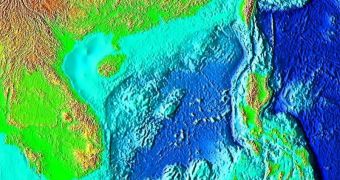Scientists with the International Ocean Discovery Program (IODP), an initiative formerly known as the Integrated Ocean Drilling Program, are scheduled to set sail on January 28 to the South China Sea, an extremely interesting and active area, especially from a geological point of view.
The main goal of the expedition will be to analyze the geological stresses and stains present at this unique location, as well as determine the exact age of this basin. The work will be carried out from aboard the research vessel JOIDES Resolution, which will set sail from Hong Kong next Tuesday.
The IODP includes scientists from countries such as China, the Philippines, India and the United States. Their upcoming work may finally reveal how the South China Sea formed, a topic that has been the subject of much debate in the international scientific community.
This sea is part of the western Pacific Ocean, and covers an area of 3.5 million square kilometers (1.4 million square miles), between the Strait of Taiwan, the Malacca Strait and Singapore. An estimated 33 percent of all the world's shipping passes through this area.
Geologists argue that the rich geological activity manifested in the South China Sea may have led to the development of significant oil and gas deposits underneath the sea floor. However, the exact extent of these reserves has not been accurately determined to date, Nature News reports.
As an interesting piece of trivia, the South China Sea lies nearly halfway between the Himalaya Mountains and the Mariana Trench, the highest and lowest points on our planet, respectively. The sea is estimated to have formed 25 million and 42 million years ago, whereas the Pacific Plate is around 200 million years old.
What geologists do know about this weird region is that it was created when a part of the Eurasian continent that once existed at this location began stretching in a north-to-south direction, a process that thinned the continent until it eventually broke apart. What caused this stretching is still unknown.
One of the possible explanations is that collisions between Eurasia and the Indian subcontinent – the same collisions that give birth to the Himalayas – were responsible for generating this sea. Another explanation is that the Pacific Plate moved away eastwards, pulling itself free of Eurasian coasts.
“The hypotheses are based only on circumstantial evidence. Much of the controversy stems from different estimates of how old the sea floor is,” explains marine geophysicist and IODP co-chief scientist Jian Lin, who is based at the Woods Hole Oceanographic Institution, in Massachusetts.
During the upcoming expedition, the team will collected samples from a depth of up to 2 kilometers (1.3 miles) under the South China Sea seabed, and then conduct geochemical and geophysical analyses on these rocks. The study may finally shed some more light on the origins of the South China Sea.

 14 DAY TRIAL //
14 DAY TRIAL //